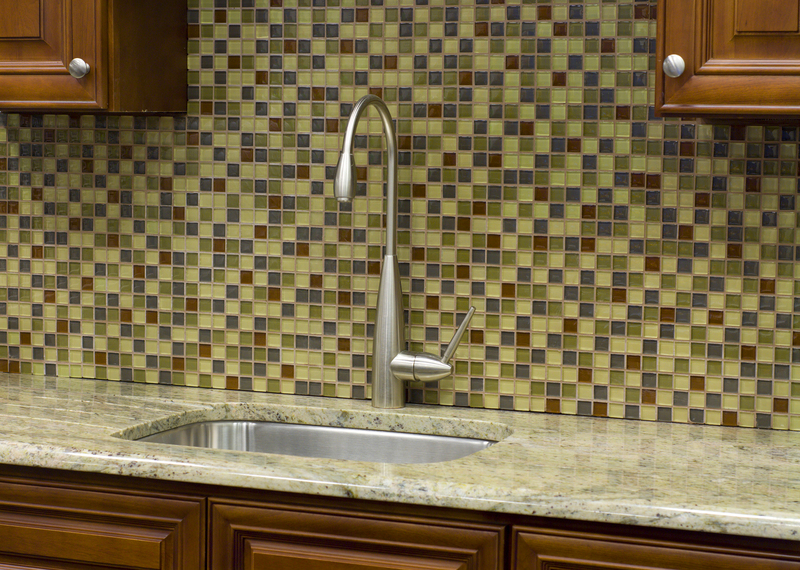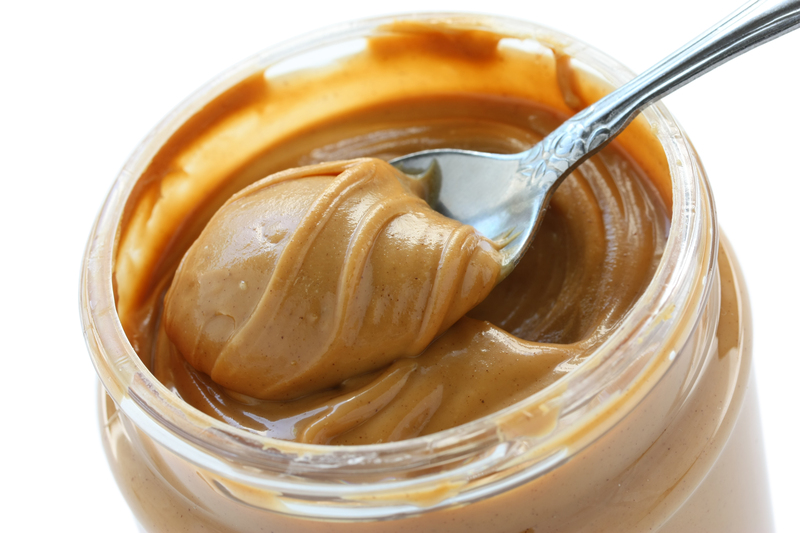Rejuvenate Your Jewelry with Home Cleaning Techniques
Posted on 19/09/2025
Rejuvenate Your Jewelry with Home Cleaning Techniques
Jewelry is more than just a luxury accessory--it carries sentiment, style, and memories. Over time, even treasured pieces become dull, tarnished, or lose their sparkle due to exposure to air, oils, and daily grime. Fortunately, you don't need to rush to a jeweler every time your rings, necklaces, bracelets, or earrings look less than dazzling. With the right home cleaning techniques, you can easily bring back the shimmer and shine to your favorite accessories. In this detailed guide, we'll explore multiple jewelry cleaning methods at home and tips to keep your pieces looking as good as new.
Why Your Jewelry Loses Its Shine
Before diving into DIY jewelry rejuvenation, it's important to understand why accessories lose their luster:
- Exposure to air can cause oxidation, especially with metals like silver.
- Everyday substances such as lotions, perfumes, and hairsprays leave residues or cause discoloration.
- Contact with water and cleaning chemicals may tarnish delicate metals and loosen gemstones.
- Grime from skin oils, dust, and sweat accumulates in crevices.
- Improper storage or handling can lead to scratches and dullness.
Knowing the cause ensures you select the safest and most effective cleaning approach for your jewelry.

Essential Tools for At-Home Jewelry Cleaning
Before you begin restoring the sparkle to your jewelry, gather a few basic cleaning supplies:
- Soft-bristled toothbrush or baby brush
- Microfiber or lint-free cloth
- Small bowls
- Gentle dish soap
- Baking soda and white vinegar
- Ammonia (for diamonds or gold only)
- Warm water
- Aluminum foil
- Cotton swabs
- Soft towels
Always double-check what materials your jewelry contains to avoid potential damage during cleaning. Certain stones (like pearls and opals) and settings require specialized care.
General Guidelines for Jewelry Cleaning at Home
- Read care warnings from your jeweler or product label first.
- Test any cleaning technique on a small, inconspicuous area first.
- Never use harsh chemicals or abrasive materials.
- Avoid soaking porous gemstones (pearls, turquoise, opal) or glued pieces, as water may dissolve adhesives.
- Rinse thoroughly and dry completely after cleaning.
Jewelry Cleaning Precautions
Some materials are especially sensitive. For example:
- Pearls or opals can be damaged by commercial cleaners and ultrasonic machines.
- Enamel or colored stones can fade or discolor if soaked too long.
- Costume jewelry (plated or glued) should only be wiped and never submerged in liquid.
Home Cleaning Methods for Common Jewelry Types
How to Clean Diamonds and Gold Jewelry
Diamonds and most solid gold pieces are durable and can withstand gentle yet deeper cleaning:
- Soapy Water Bath: Combine a few drops of mild dish soap with warm water. Soak your pieces for 15-20 minutes. Gently scrub with a soft toothbrush, especially under prongs and around settings. Rinse in clean water and pat dry with a lint-free cloth.
- Ammonia Solution (for deep cleaning): Mix 1 part ammonia with 6 parts water. Soak for no more than a minute, then gently brush and rinse quickly. Never use ammonia on colored gems.
How to Polish Sterling Silver Jewelry
Silver tarnish occurs when sulfur compounds in the air react with the metal, creating a darkened appearance. Here's how to revive the shine of your silver jewelry at home:
- Baking Soda Paste: Mix 2 parts baking soda with 1 part water to form a paste. Apply with a damp, soft cloth and gently rub. Rinse and buff dry.
- Aluminum Foil Bath: Line a small bowl with aluminum foil (shiny side up), add 1 tbsp of baking soda and 1 cup of hot water. Place your silver pieces in the solution (ensuring contact with foil). The chemical reaction removes tarnish safely. Rinse after a few minutes and dry well.
Note: Avoid these treatments with antique or oxidized silver finishes which are meant to look aged.
Care for Platinum Jewelry
Platinum is robust but still benefits from routine cleaning:
- Use mild dish soap and warm water, soak for 10-15 minutes.
- Gently brush with a soft toothbrush to dislodge dirt.
- Rinse and polish with a microfiber cloth.
For deep scratches or loss of shine, ask for professional polishing.
Gentle Cleaning for Gemstone Jewelry
Different gemstones react uniquely to chemicals and liquids. Here are diamond alternatives' home cleaning tips:
- Rubies, Sapphires, and Emeralds: Use only soapy water and a soft brush. Avoid ammonia or ultrasonic cleaners (especially with inclusions).
- Porous stones (Opal, Turquoise, Pearl): Wipe gently with a damp cloth. Avoid submerging or soaking.
- Soft stones (Malachite, Lapis Lazuli): Clean with a dry lint-free cloth; moisture can damage them.
Maintaining Costume Jewelry
Fashion pieces usually feature base metals or glued rhinestones.
- Wipe with a barely damp (almost dry) microfiber cloth.
- Avoid soaking or brushing as water can dissolve glues or plate coatings.
- Store in individual pouches to prevent scratching or color transfer.
Step-by-Step Guide: How to Rejuvenate Jewelry at Home
- Identify the type of jewelry: Check for hallmarks (e.g., 925 for silver, 10K/14K for gold) and inspect for porous or glued stones.
- Choose the appropriate method: Match your cleaning strategy to the jewelry's material as outlined above.
- Prepare your supplies: Lay out towels, bowls, cleaning mixtures, and brushes.
- Clean gently: Use soft brushes and avoid excessive scrubbing, especially around delicate settings.
- Rinse thoroughly: Ensure all residue is removed to prevent dullness or irritation.
- Dry completely: Moisture can cause tarnishing or damage settings if left unchecked. Air-dry on a soft towel when possible.
- Buff to finish: Polish gently with a microfiber cloth for maximum shine and clarity.
Advanced Home Jewelry Cleaning Hacks
Want to go the extra mile in freshening your jewelry at home? Try these safe and effective tricks:
- Toothpaste Touch-Up (For hard metals): Non-gel, non-whitening toothpaste applied with a soft brush can polish silver or gold. Do not use this method on stones or plated jewelry.
- Effervescent Tablet Soak: Drop a denture-cleaning, antacid, or retainer-cleaning tablet in a cup of water and soak your jewelry. The fizz can lift grime from diamonds and hard stones (not suitable for pearls or opals).
- Lemon Juice & Baking Soda: For seriously tarnished brass or copper jewelry, apply a mixture of lemon juice and baking soda, let sit, and rinse thoroughly.
- Cotton Swab Detailing: Use a Q-tip to reach tight spots around prongs and under settings.
Pro Tips for Ongoing Jewelry Maintenance
- Wear jewelry after makeup, lotions, and perfume are fully absorbed.
- Remove rings before hands-on chores, swimming, or bathing.
- Store each piece in a separate soft pouch or lined box to prevent scratches.
- Silica gel packets help absorb moisture in jewelry boxes.
- Wipe down pieces after each wear with a clean microfiber cloth to remove surface oils.
- Schedule an annual professional cleaning and inspection for valuable or heavily worn items.
Storing Jewelry for Longevity
Correct storage is as crucial as cleaning for keeping your treasures sparkling:
- Use anti-tarnish strips for silver jewelry.
- Store gold and diamond pieces separately to avoid mutual scratching.
- Avoid direct sunlight and extreme humidity in storage areas.
- Consider a dedicated jewelry box with individual sections.
When to Seek Professional Care
While home techniques can rejuvenate most jewelry, some situations require expert help:
- Heavily tarnished silver or intricate, antique pieces
- Loose stones or weakened prongs
- Cloudy or abraded gemstones
- Valuable heirlooms or high-polish platinum and white gold
Professional jewelers use ultrasonic cleaners, steam machines, and specialized polishing compounds that may be unsafe for home use but provide the highest level of cleaning and repair.

Frequently Asked Questions About Home Jewelry Cleaning
How often should I clean my jewelry at home?
For most pieces, monthly cleaning coupled with daily wiping will suffice. Delicate or frequently-worn items like rings may need more frequent care.
Is it safe to clean all jewelry with dish soap?
Mild dish soap is gentle enough for most metals and hard stones but not for pearls, opals, or glued costume jewelry pieces.
Why does my jewelry still look dull after cleaning?
This may be due to scratches, persistent residues, or a film of cleaning solution. Try polishing with a fresh microfiber cloth, or have your piece professionally buffed if scratches are visible.
Can I use commercial jewelry cleaners?
While many are safe for solid gold, diamonds, or silver, always read the label. Avoid them for soft or porous gemstones and antiques. Homemade, natural cleaners are often safer and eco-friendlier.
Conclusion: Restore Your Jewelry's Radiance at Home
With the right knowledge and careful application of home cleaning methods, anyone can rejuvenate their jewelry collection and restore its original brilliance. These techniques not only refresh the appearance of your cherished pieces but also preserve them for future generations. Make regular home jewelry maintenance a part of your self-care routine--your accessories will thank you with a twinkle and shine every time you wear them!
Remember: Gentle cleaning, appropriate storage, and routine care go a long way in maintaining the beauty and sparkle of your jewelry. For delicate or truly valuable pieces, don't hesitate to consult a professional to ensure your treasures last a lifetime.



